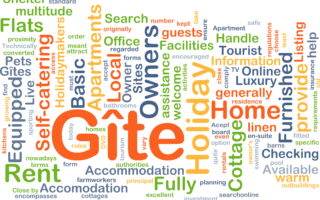Building in France: From Grassy Knoll to Approved Plans
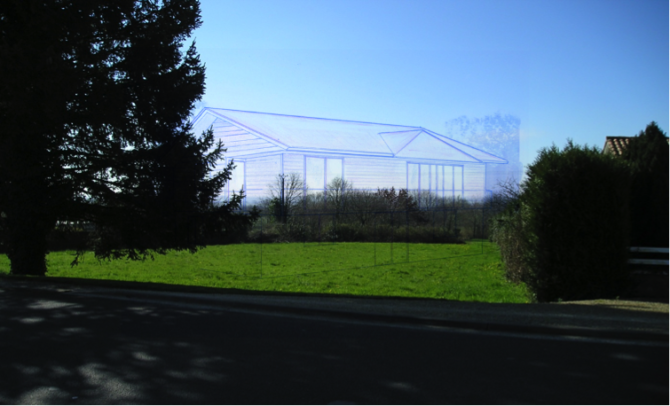
Renovation expert Stephen Davies shares a case study of a complete new-build in France. In this detailed step-by-step description, we follow the development of the project from an empty plot to the approval of the building plans.
Case Study: From a Grassy Knoll, Onwards and Upwards
So here it is. In the locality you want. It has the views and the position you cannot see being beaten. It has a price you are comfortable with. So what happens next?
It is at this point that the conversation starts. It will be the first of many. It is a conversation that will decide next steps on a journey that will be frustrating and problematic, rewarding and energising in equal measure. Anyone taking on a plot of land and building their own house will experience many emotions. Depending on how informed and prepared you are will determine the levels of, and reactions to, these emotions.
This is a case study of one particular situation and is meant as a guide of some of the experiences you may encounter. Not all situations are the same and other peoples experiences will differ from this one.
Looking to build a house near close family this client was fortunate to discover a village plot in the vicinity of his sons’ property. Located on the main road through a small village conveniently located near a Tabac, a bar-restaurant and, for the more spiritual, the local eglise, this plot offered the client many of the things he was looking for to satisfy his set criteria, it “ticked all the boxes”.
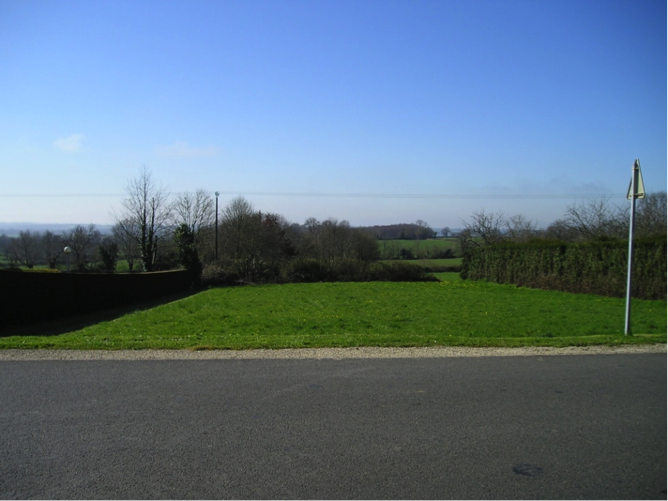
Certificat d’urbanisme and Services
At this point the conversation begins with a discussion about a certificat d’urbanisme CU. Does the plot have one? What does it say? And, how long does it last? We knew the plot had a CU in place as the advert stated “CU positif”. This meant that we could then ask what level of CU was available. As previously stated a CU is classed at two levels. CU Informative (CU.a) and CU Operationelle (CU.b). The “a” version informs what classification is applied to the land according to the local plan, called the Plan Local d’Urbanisme (PLU) and shows if the plot is constructible, agricultural or something else. Obviously the “constructible” is the one we are looking for in conjunction with a building project. The “b” version is one that says if a specific operation can be carried out on the plot. In the case of a house build project the words construction d’une maison d’habitation is the key expression to look for.
Ours showed us we could build a maison d’habitation individuelle. It also outlined who the providers of servces of water and electricity were, and who was responsible for the control and inspection of the individual drainage system or fosse autonome, as the plot was not serviced by mains drainage. A quick check with the local Mairie gave us the contact details for all these services and we were able to enquire online for all the necessary forms for these service applications.
The duration of validity of a CU needs checking at this point to ensure that it is current and remains applicable for at least the duration of the buying process and beyond into the planning application stage. Consider making its extension a clause in the purchase agreement.
It is a good thing at this stage to have the preliminary contact with the local Maire and make the introductions as to who we are and what we were wanting to do. It’s always a good idea to get them “onboard” at the outset. It is also possible to download the latest version of the permis de construire application form via www.service-public.fr. This may be more current than the one the Mairie can provide.
Permis de Construire
We were now confident that the CU, as an instrument of planning equivalent to outline planning permission in the UK, allowed us to go to the next stage and prepare a dossier for a permis de construire. Here I make the point again as it bears repeating. A CU is not planning permission, the Maire saying that it’ll be OK is not planning permission. I believe people when they tell me the Maire has indicated to them that they can start the project on the land. I interpret this as meaning that they are able to start the process, and any build of a house needs full planning permission in writing, signed, sealed and stamped. No exceptions.
Brainstorming
With the officialdom in place we set about a process of defining, refining, redefining and re-refining ideas and thoughts concerning what type and level of accommodation, style, internal and external, layout and form. In reality this entailed a list of wants, must haves, and that would be nice. Number of bedrooms, bathrooms, garage etc. is a thought process common to all projects. In reality this involves sitting down with the client with a sketch pad and basically scribbling, doodling and putting down on paper thoughts and ideas as they occur, and almost as quickly discarding them. Squared paper homework is a good way to get ideas on internal layout, position of elements, rooms and flow within the building. These can, and should, be batted back and forward for as long as it takes.
This stage takes care and attention to detail. In the specific case the criteria were governed by the fact that the client lived on his own, had visitors and family to stay every so often, had a couple of classic vehicles, wanted to make best use of the impressive views over the Bocage to the south, liked the idea of his accommodation being all on one level and open plan. Ideas went back and forth and the layout was re-drawn several times. Even when a final layout was agreed this went back and to for “fine tuning” right up to, and a little beyond, the final drawing stage!
We agreed on a house that was essential orientated with the main living spaces facing south. Upside-down living with a lounge kitchen open plan with a balcony off the lounge and his personal bedroom on the same, upper, level with a decent sized en-suite. The downstairs was to have two guest bedrooms with their own bath/WC facilities. Full-length garage. The lower floor was semi-interred into the existing land at the rear and opened out to the garden on the south side.
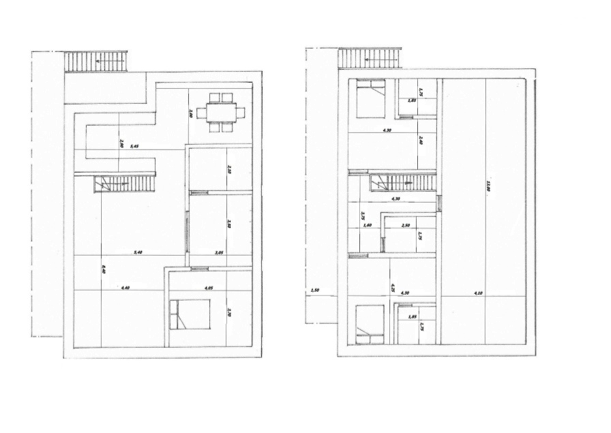
First Plans
Once we had the look and layout sorted we could set about sending initial sketches to construction companies for some idea of costs for the various options we had discussed re type of build we were considering. These were all block and render, Timber frame called maison ossature bois, rendered or clad, oak-framed and even a “Huf house” (upscale prefabricated homes, reminiscent of a Grand Designs TV programme). All have plusses and minuses and the decision was to go for a combination of block and render lower floor with a timber frame clad upper level.
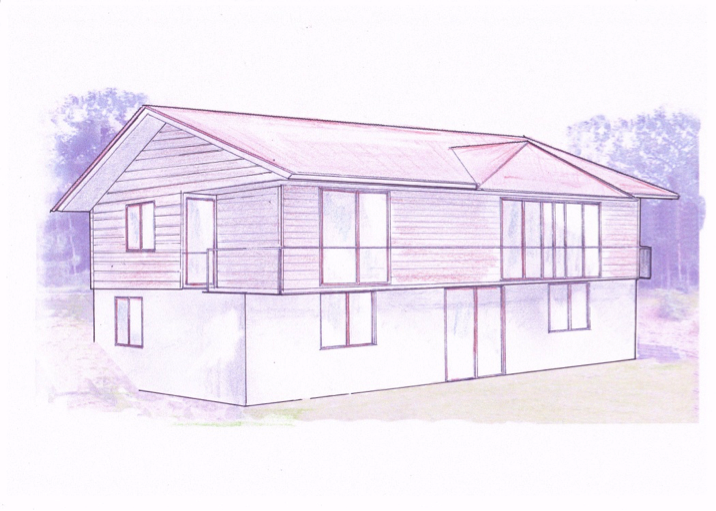
Ground levels dictated this to a certain extent as we decided to inter the garage and felt more confident in waterproofing the North side in the ground if block construction was used. Once we had produced the above view we contacted the local planning authorities to see if they had any concerns re the style and look of the build. Their only thoughts were to make sure that the house lined up with its neighbours relative to distance from, and parallel to, the road, and to make sure we used similar colours as the vernacular for the windows and doors, or menuiserie, and roofing material.
We now had the look and the internals sorted out. It was now a case of putting together all the elements for the Permis de Construire dossier as well as the forms and imagery for the service applications; water and electric supply and fosse septique system. All of these have specific requirements and the elements are normally stipulated on the application forms. These requirements can be used as a menu of what should be provided to the various agencies to ensure a successful set of outcomes.
Something that has always amused is the fact that some fosse applications can only be accepted with a permis de construire reference number. This you only get after you have handed in the paperwork and drawings for the application. This application has to have an attestation that the fosse you are wanting to install conforms to the norms and rules applicable. You only receive this attestation after review from the fosse authority. So put in plans etc, get a reference number. Note this on fosse application and send that in. Get dossier incomplet note from planners because fosse attestation is missing wait for fosse accord and send it back to planners. Classic what-comes-first-the-chicken-or-the-egg. If by now you are thinking it’s all a bit daunting, you would be right. However, it does all fit into a sequence that as long as you keep ahead of the paper chase and can organise the activities into distinct areas it all flows (fairly) logically. You have started with a plot and are looking to build a house on it and make sure the house is serviced, comfortable and gives you what you want. A strong idea of what you set out to achieve will sustain the process when, as inevitably happens, you find yourself wondering if it is worth it.
Réglementation Thermique
At this point the réglementation thermique 2012 rears its head. This set of legislation dictates that at the planning stage consideration is given to how the build is going to be made efficient in terms of thermal performance and energy use. This means that the plans have to show levels of insulation, amount of glazing to wall areas and if there are going to be any means of producing electricity to lower the amount the house is going to use from the national grid. The actual levels and systems are the stuff of many more books and technical manuals. It is sufficient to say that there are online companies who can advise as to best solutions. They will offer the most cost effective way of ensuring RT2012 compliance and be able to provide an attestation that the project has made all necessary provision to make the build as energy efficient as possible. This has to be included with any permis de construire application. It is a set of rules that are subject to constant review and modification. An online search at the right time will give the current set of rules that any project has to comply with.
The Waiting Game
After dossiers have been submitted the official wait begins. I say official as the Mairie will stamp and date your planning application and give you a reference number. From this point they have 2/3 months to respond to the application. Do not be surprised if, within the statutory one month that they have to request further information re the dossier, you receive a dossier incomplet notice. The planners reserve the right to request any additional information or clarification within this month. It must stipulate exactly what they require. This may be an additional view of a particular feature or an additional graphic view. I am also of the opinion that this may also be a way to give themselves a little extra time to consider the application as this suspends the response time which restarts when they receive the pièces manquantes (if anyone asks I never said that).
While all this was in hand we took the time to contact builders offering the style of build we were wanting to use. This was done by sending mails with copies of sketches and thoughts, as well as an indication of location, asking if we could arrange meetings and discuss options on getting the house built. It is important to point out that the permit is en cours and being processed. This shows the prospective builder that the project is a serious one and they are not just offering their services on spec. They are loathe to provide quotes on a vague “I was thinking about building a house can you tell me how much does it cost?” and would prefer a good idea that the clients intentions are serious as backed up by drawings and plans.
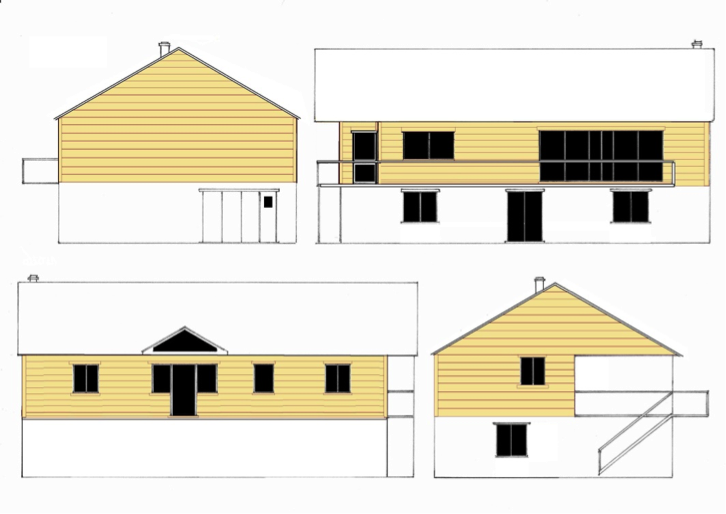
Approved!
Our plans were duly passed. A careful read of the accord will show if there are any special conditions or articles that need to be included in the project. Also be aware that the accord starts with the word arrêté. This actually means decree and not stop. I have known this cause some panic.
We have the required costs and quotes from our chosen builder. He has agreed to construct the shell and get us to the air and water tight stage. From here we are exploring the electrician and plumber options and also looking at what, if any, parts of the project the client is able to do for themselves. Most people will want to do some works for themselves with an obvious knock on effect on final costs. Once a planning accord has been received you have some time to start the works, up to three years, although this can be extended if required. For our project we are looking to break ground sometime in the summer of 2016. All things being equal I will write about that so stay tuned …
 Stephen Davies is a long-time FrenchEntrée contributor on building and renovation matters in France. He runs Renovate in France, a resource of architectural and support services and information, and works full time as a designer, planner and project manager on renovations and new builds.
Stephen Davies is a long-time FrenchEntrée contributor on building and renovation matters in France. He runs Renovate in France, a resource of architectural and support services and information, and works full time as a designer, planner and project manager on renovations and new builds.
The information in this article is provided for informational purposes and does not constitute legal, professional or financial advice. We encourage you to seek the advice of a relevant professional before acting on any of this information. Any links to other sites are provided as sources and assistance, and are not intended as an endorsement.
Share to: Facebook Twitter LinkedIn Email
More in investment, property, property conversion, real estate, renovation, tax
Leave a reply
Your email address will not be published. Required fields are marked *

